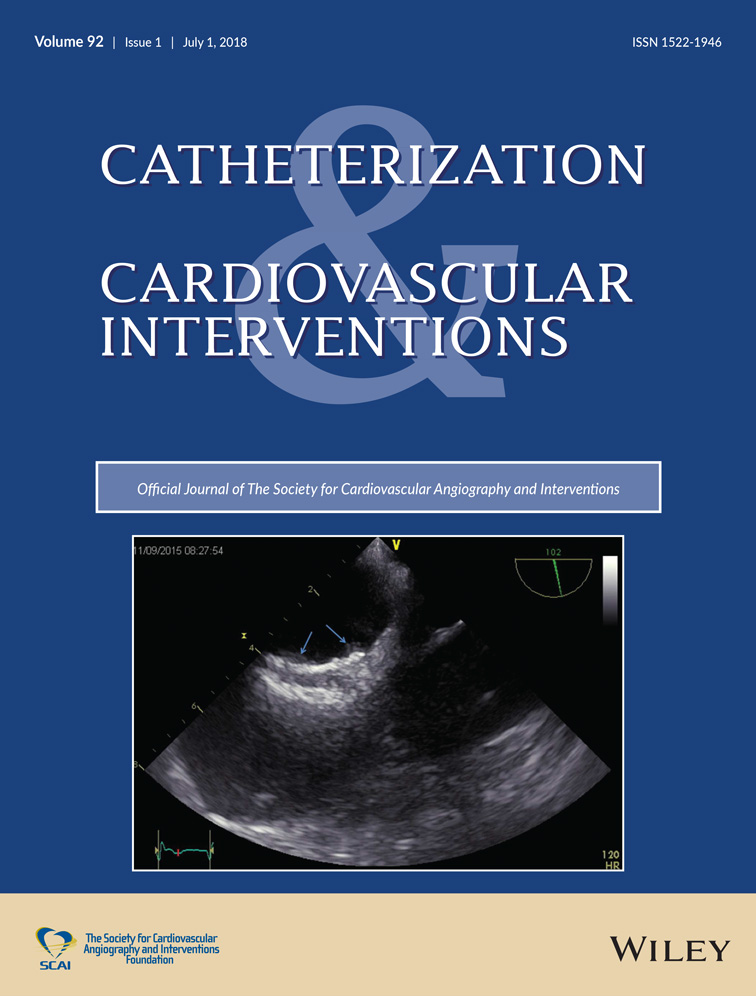A novel guidewire-integrated embolic protection filter device with a handy-folding system: In vitro and in vivo performance assessment
Abstract
Objectives
We developed a novel guidewire-integrated filter device with a handy-folding system (IFD: Inoue filter device). In vitro and in vivo studies were conducted to evaluate the feasibilityof the IFD.
Background
Although distal atheromatous and thrombotic embolizations remain unresolved critical issues during catheter interventions, distal protection devices are infrequently used partly because of reduced lower maneuverability.
Methods
In the in vitro experiment, we created an experimental circulation model composed of silicone latex tubes, a reservoir, and a roller pump. After the filter device was deployed in the tube, polystyrene fluorescent microspheres were injected and the capture rate was calculated. Ten trials were performed using the IFD and Spider FX. In the in vivo study, five independent operators deployed, and they retrieved the IFD in swine common iliac and internal carotid arteries. The procedural success rate as well as the delivery and retrieval time was evaluated.
Results
In the in vitro study, the mean capture rate was 94% and 35% in the IFD and Spider groups, respectively. In the in vivo study, all procedures were successful, with no complications. The mean delivery time was 281 ± 87 s and 194 ± 67 s and the mean retrieval time was 24 ± 9 and 13 ±1 s in the left internal carotid and the left common iliac arteries, respectively.
Conclusion
Although further studies and improvements are required, the study results indicate that the IFD is feasible.
CONFLICT OF INTEREST
Kanji Inoue holds all patents of the Inoue filter device The other authors have no conflict of interest to declare.




